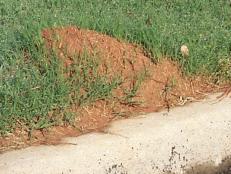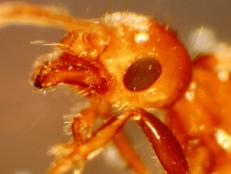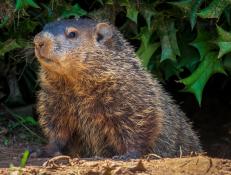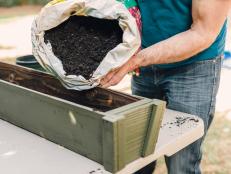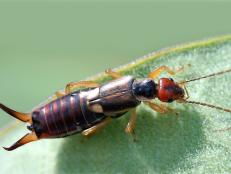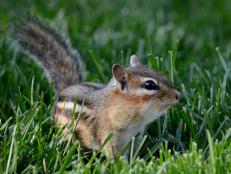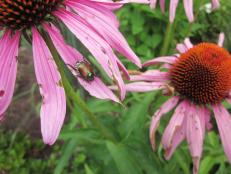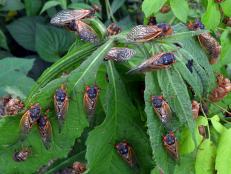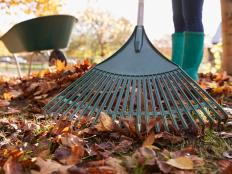Find Garden Remedies in the Kitchen
Learn how to combat garden pests with common items from the kitchen.

Help prevent black spot on roses with a mixture of skim milk and water.
Gardening expert Marianne Binetti shares solutions for common pest-control problems that can be found in your kitchen cupboard.
- Get rid of mites (you can see what they look like by turning over a yellowing leaf; they are the tiny dark specks) with a combination of 1 part rubbing alcohol and 4 parts water. Decant into a trigger spray bottle and spray the backs of the leaves. To help the alcohol mixture stick to the leaves, add just a little squirt of mild dishwashing liquid to the spray bottle. Use this spray on a cloudy day, if possible, to prevent the intensity of the sun from damaging the foliage.
- For weeds in the cracks of sidewalks or patios, simply pour on plain old vinegar, which contains an acid that will kill the weeds quickly. Don't use straight vinegar on lawn weeds because it will damage the grass leaves.
- Combat black spots on roses by using skim milk diluted with water in a half-and-half solution. Spray or dab the solution on the affected leaves with a paintbrush. This mixture prevents future black spots, but it won't eliminate those already there.
- If you have worms on your organic produce such as kale, cabbage or lettuce, try using self-rising flour to get rid of them. Just scoop some flour into a small paper bag and punch some holes in the bottom with a nail head or ice pick. Shake over the affected plants. When the worms feed on the plants, they will also eat the flour, which will destroy their digestive systems.
- If you have slugs on daylilies or hostas, use an ammonia mixture. Dilute the ammonia; use about 1/3 ammonia to 2/3 water and pour into a spray bottle. Spray into the crowns of the hostas. This will kill even the youngest slugs, and the ammonia converts into nitrogen and feeds the plants at the same time.
- White flies are difficult to banish without a harsh chemical. Cover a tin can with yellow paper, which is very attractive to white flies. Cover the yellow can with a piece of plastic and smear with petroleum jelly. Stuff the can with newspaper and put it on a stake. Place it in the area where the plants are affected. Replace the plastic every few days with more smeared plastic. The flies will get stuck in the petroleum jelly when they try to reach the yellow can.
Organic Pest Control Truths
See All PhotosNext Up
Deter Deer in the Garden
Learn how to keep deer from destroying your landscape and backyard garden.
How to Get Rid of Grubs
Grubs feed on the roots of your lawn and plants. Take control before these destructive pests get out of hand.
Humane Ways to Get Rid of Groundhogs and Keep Them Away
Got groundhogs? Discover effective, all-natural ways to keep these critters out of your yard and garden.
Does Potting Soil Go Bad?
Potting soil won’t last forever, in a container or in the bag.
How to Get Rid of Earwigs
Earwigs aren't pretty, and they can eat your plants and invade your home. Learn how to make earwigs bug off.
Lawn Seeding: How to Plant Grass Seed
To reinvigorate your existing lawn or plant a new one, follow these steps on how to grow grass in the spring and fall.
How to Keep Chipmunks Out of the Garden
Learn how to get rid of chipmunks in your garden and stop these critters from wrecking your yard.
How to Get Rid of Japanese Beetles
Get rid of Japanese beetles with a few of these easy strategies.
Cicadas 2024: Everything You Need to Know
Two types of cicadas will emerge this year. This is a rare natural phenomenon that hasn’t happened since 1803! Learn about these fascinating creatures and find a few practical considerations for your home and garden.
13 Ways to Get Your Lawn Ready for Cool Weather
Learn how to prep your lawn for fall and winter to ensure green grass come spring.






